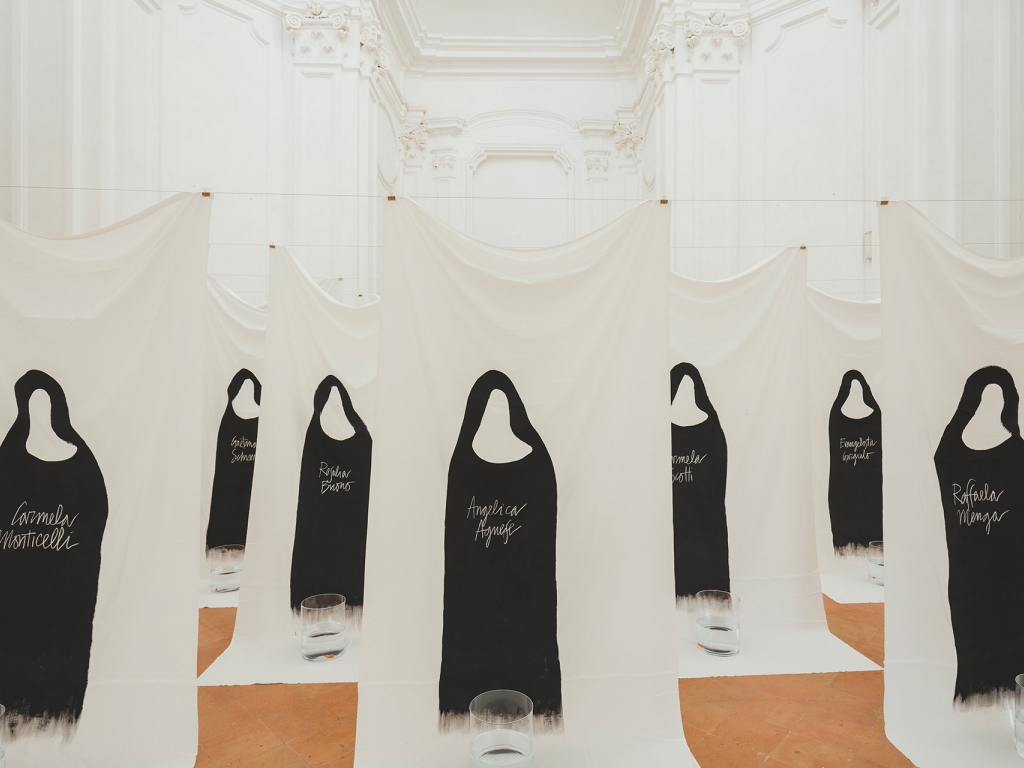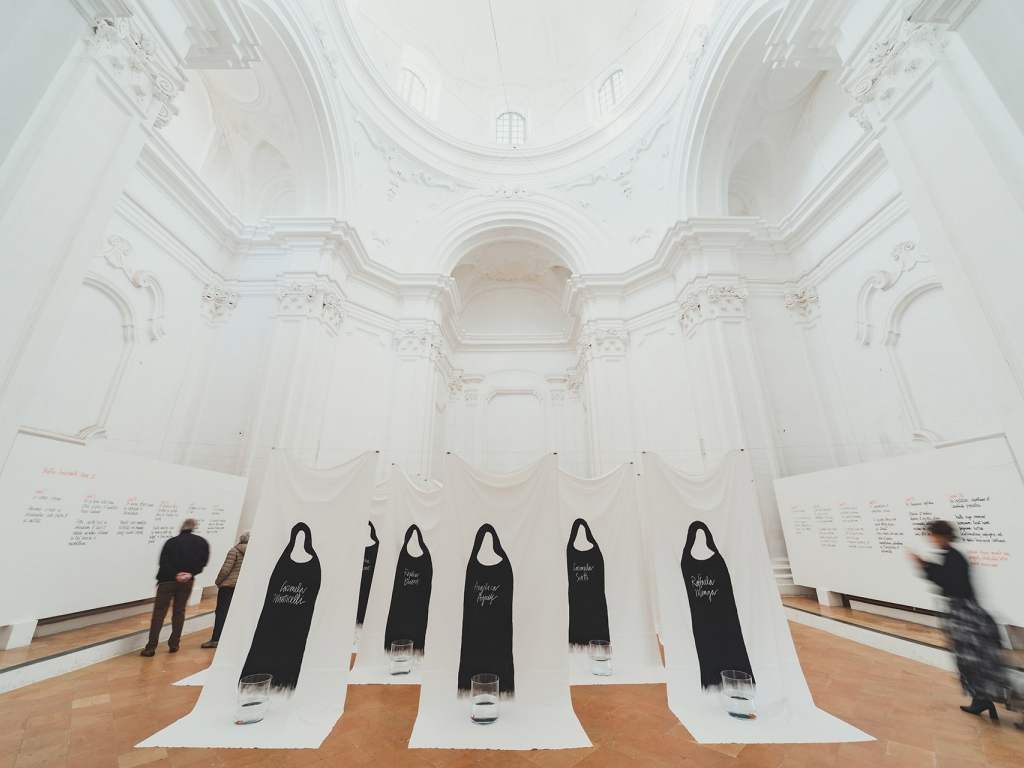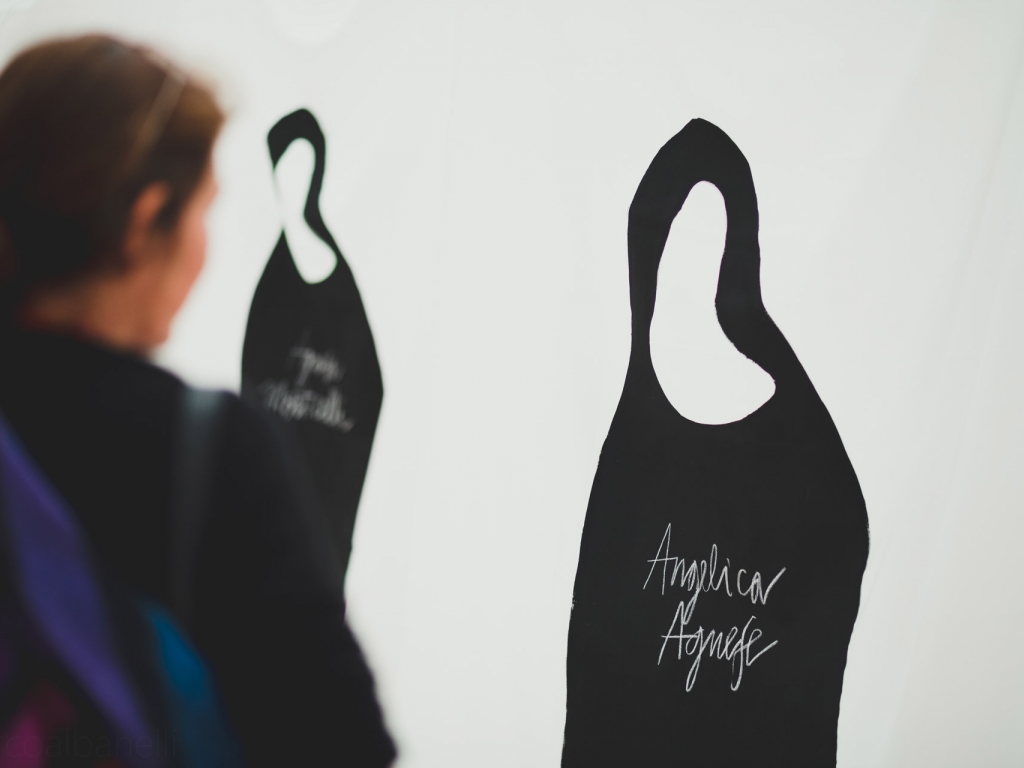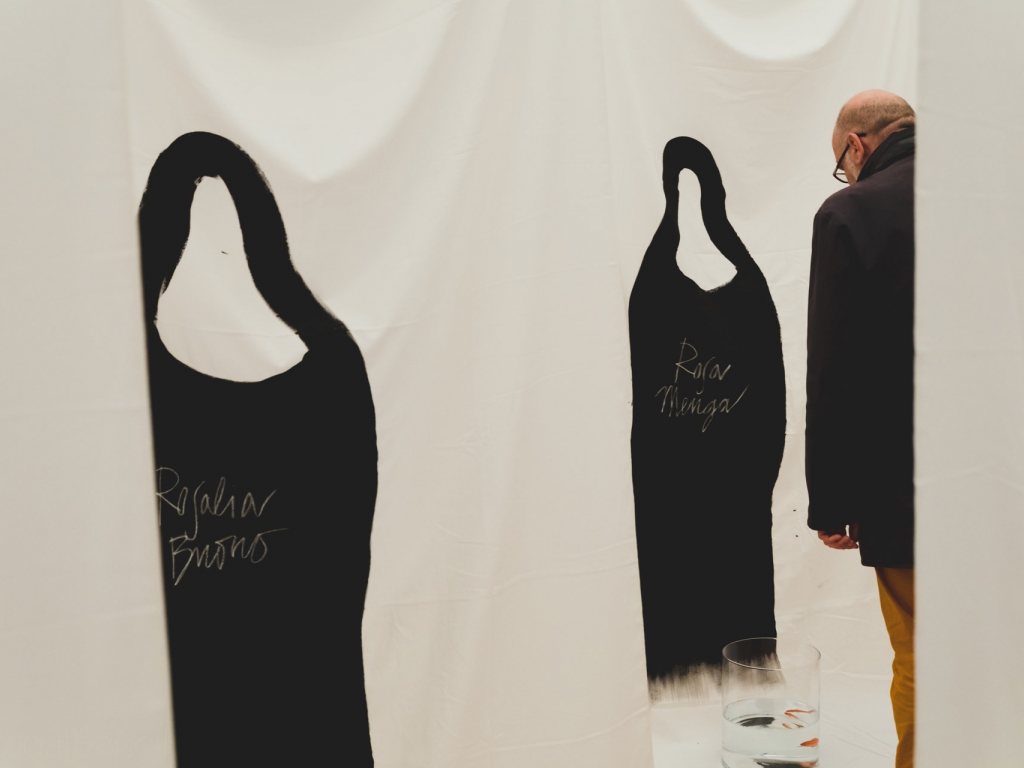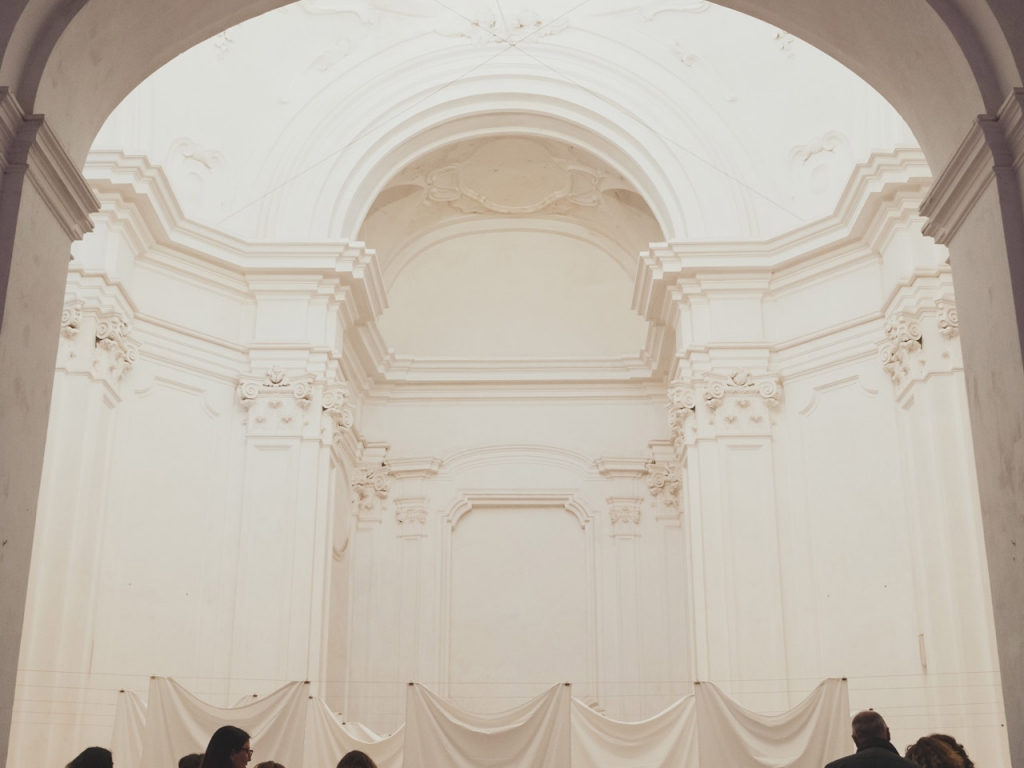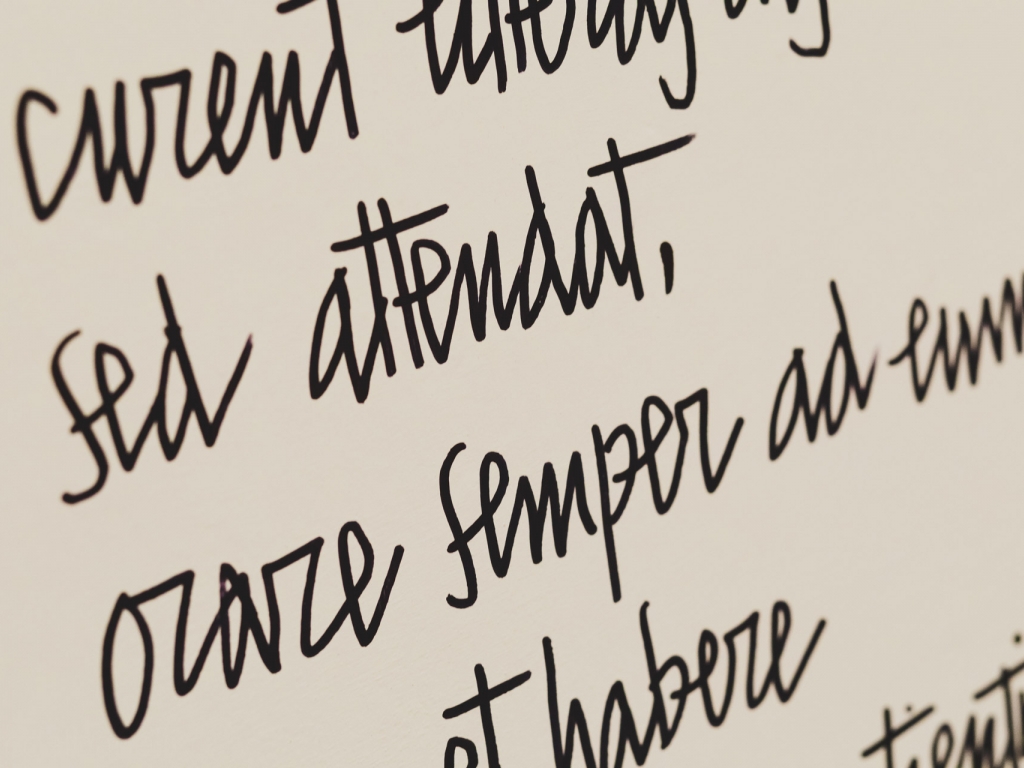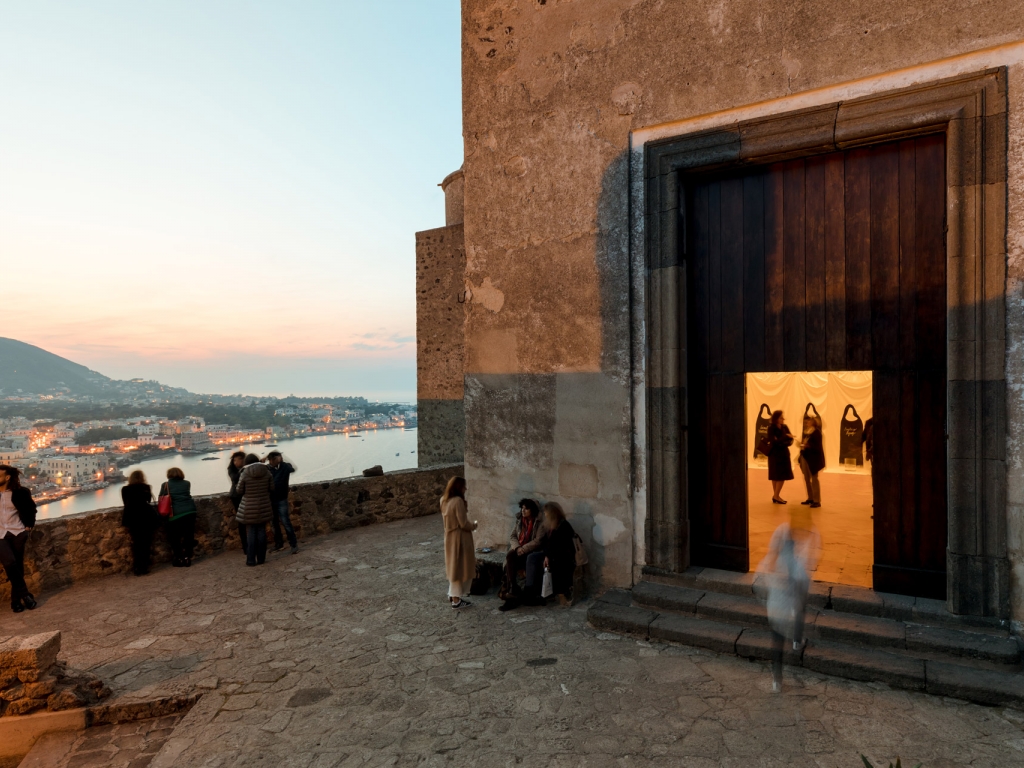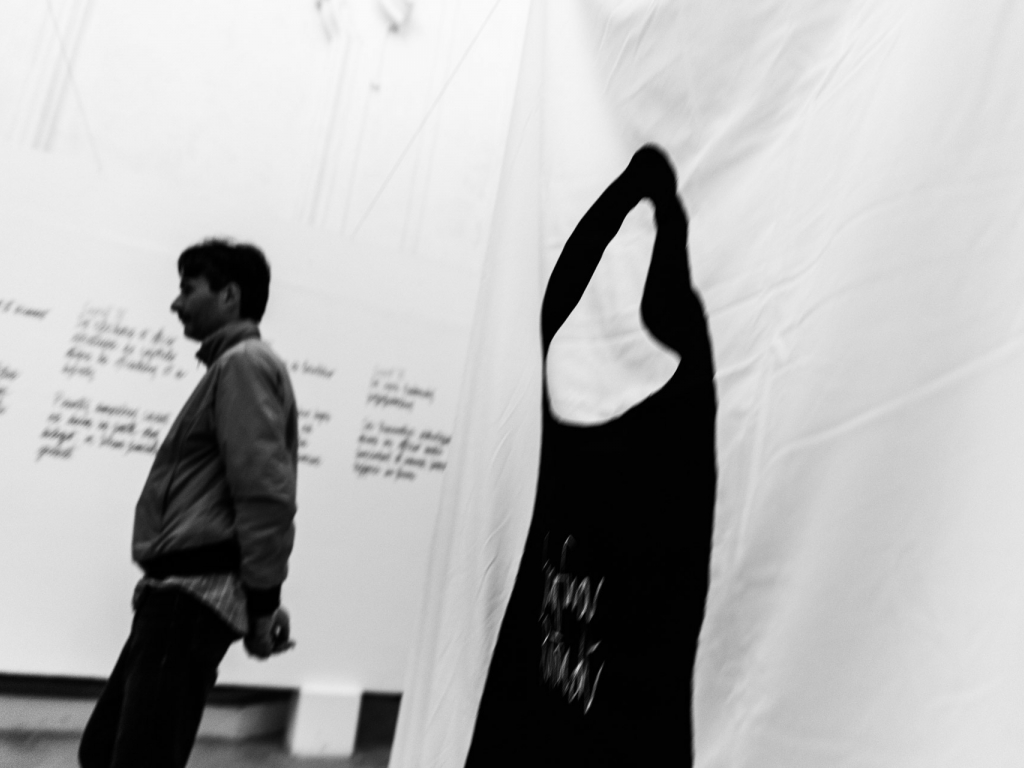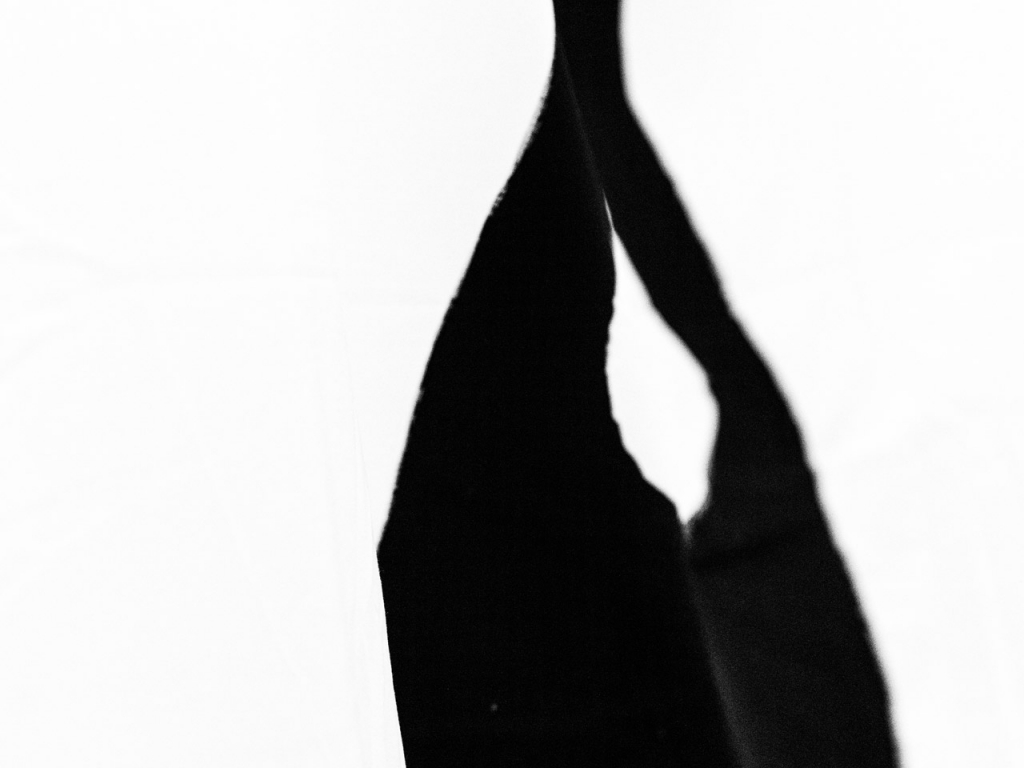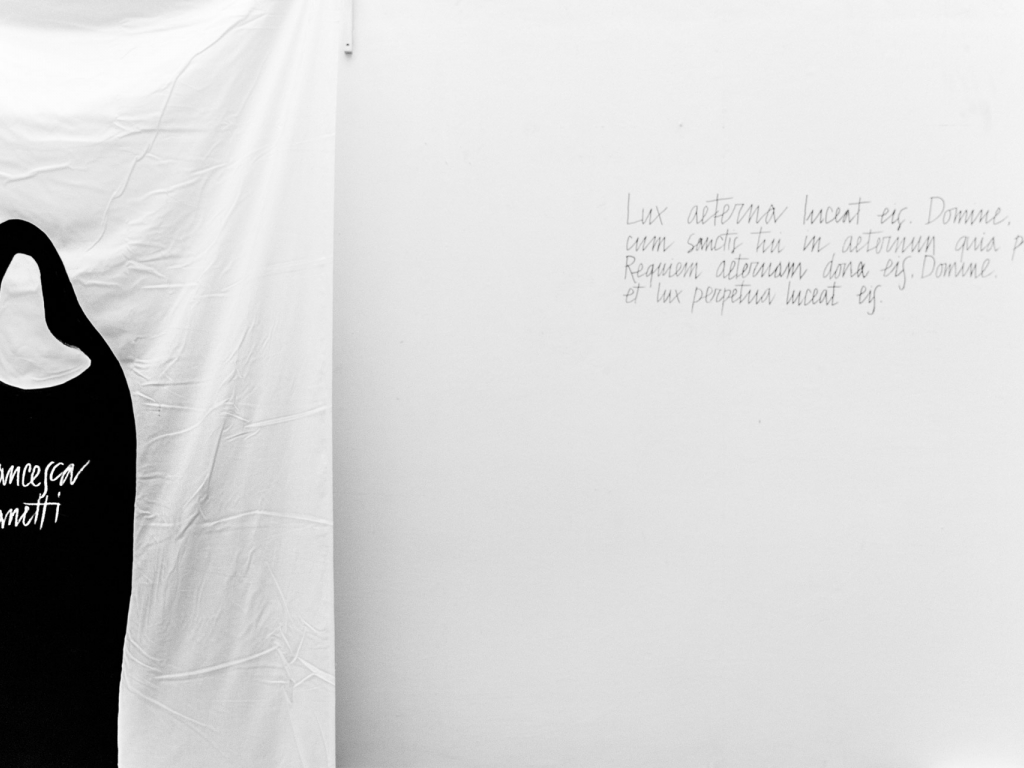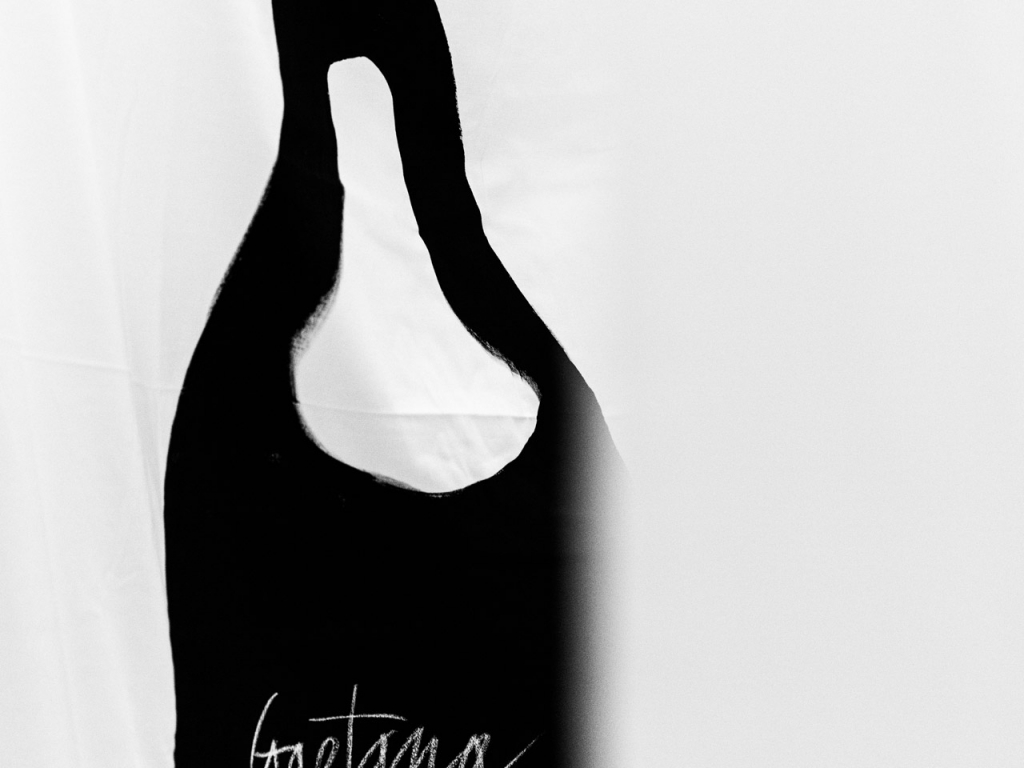Franco Lancio. 16 Clarisse (16 poor Clares)
The first Poor Clares arrived at the castle of Ischia in 1577. Sixteen definitively left the monastery in 1809. To them, and to the other sisters, this work of purification is dedicated.
Silence, prayer, chastity, enclosure was the path of the nuns kept within the walls of the convent until their death. At that time the body, removed from the light of earthly life, was seated on the pupils, seats that slowly collected the wits of the nuns, emptying them from every impure part.
The church of Immacolata, above the Putridarium, once again welcomes its last nuns, symbolically/emblematically depicted in the ghost of their habit on sixteen hanging curtains. The body, liquefied in clear water, survives through the flickering of goldfish, live flames of their spirit. The words of the rule warn and delimit the space of the Poor Clares. The sound of the clear drops marks the time and envelops the dazzling space of the church together with the voices of the requiem of Ligeti.
The irregular rhythm of the dripping of the drops recalls the liquefy in clear water of the body of the Poor Clares. It follows independent time cycles whose random combinations immerse the space in a three-dimensional, dense and changing resounding plasma. At regular intervals is added the prayer song of the requiem, the Lux Aeterna of Ligeti György. The sixteen solo voices, as many as the Poor Clares, simultaneously sing the same melody and the same words, but each following an independent line of different duration. In the continuous (out of phase) variation of sounds, the perception of the “individuum” is lost in favour of the whole.
Sound installation by Gian Paolo Vitelli.
(Photos © Marco Albanelli - Castello Aragonese d'Ischia / The black and white photos are © Lucia De Luise)
